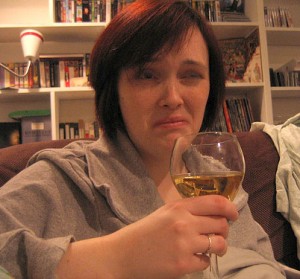
We are continuing on with part three on our series on wine faults and flaws, bad wines, their diagnostic, causes and treatment. Hope this info will help make the wine world a slightly better place! 😉
More on Wine Faults
6. Inadequate Settling of White Juices.
Description: A common problem in white wines is a leafy, vegetal character reminiscent of cigar butts.
Cause: Attributable to the winemaker’s failure to let the juice settle adequately before fermenting. Suspended organic material is attacked by microorganisms including wild yeasts.
Prevention: Involves light (15-25 ppm) sulphiting of juice immediately after pressing; settling cold and racking settled juice off sediment before fermentation starts.
Treatment: No practical solution….sorry 🙁
Judging: Such characters are usually considered flaws rather than faults.
7. Tyrene
Definition: Tyrene or 2,4,6 trichloro anisole (T.C.A.) is evident in both odour and flavour. It evokes the image of musty barrels, musty, dank, mouldy wood, or mouldy newpaper. Its threshold is very low – about 1.5-4 parts per billion.
Cause: Once immersed in wine, fungal spores in the lenticels of natural wine corks attack chlorine compounds that were used to bleach the cork tree bark for cosmetic purposes. T.C.A. can noticeably contaminate up to about 5% of all wines bottled under cork and produce subtle unpleasant characters in many more. T.C.A. arises infrequently in the absence of cork, sometimes from chips or barrels or winery wood treated with pentachlorophenols.
Prevention: The only reasonably certain prevention is to use artificial stoppers or Altec aggregate corks (even these may produce minor problems).
Treatment: None..the wine world is going synthetic and screw cap…may be the reason.
Judging: If detected, TCA should be labeled a fault. Affected wines can usually be judged and since the problem is one that is difficult for the winemaker to avoid, an attempt should be made to assess the status of the wine itself.
8. Geranium Character
Description: A strong resemblance to geranium leaves in aroma and flavour.
Cause: Malolactic bacteria acting on potassium sorbate can produce 2,3 ethoxy, 3,4 hexadiene.
Prevention: Adequate levels of sulphite when sorbate is added to prevent yeast activity in an off-dry/sweet wine act synergistically to suppress both yeast and ML activity. Wiinemakers should not attempt MLF in kits that may contain sorbate.
Treatment: None known.
Judging: Even very low levels of ethoxy hexadiene are inappropriate and should be assessed as a fault and the wine considered undrinkable.
9. Candida-Acetaldehyde
Description: Wine has a distinctive, straw-like sherry-like, “dirty”, acrid character;
Cause: A surface yeast, Candida vini, an obligate aerobe, may grow on the surface of wines in storage containers – particularly when ullage is too great. At the wine’s surface, the combination of available oxygen, low sulphite levels and depleted alcohol provide suitable conditions. Several genera of film-forming yeasts may be involved (Pichia, Hansenula, Dekkera) and the production of acetaldehyde and other off-characters is slow and the bulk of the wine is often not affected (particularly in large containers). Films are fragile and will disintegrate easily.
Prevention: Minimize exposure of stored wines to air. Red wines are significantly more susceptible to Candida infection than are whites, perhaps simply because they tend to be handled more often and (partly as a result) may have lower levels of sulphite. Be particularly vigilant after removing samples. Monitor wines in 4-litre dark glass jugs frequently; they tend to be most vulnerable; avoid using jugs if possible. Maintain 25 ppm free SO2. Keep fermentation locks topped up and level of wine in storage containers topped up.
Treatment: Try to remove film. Add 25 to 50 ppm SO2 to render the wine less hospitable, 50 to 100 ppm if acetaldehyde detected. Spray surface with 10% sulphite solution or float pellets of metabisulphite/paraffin. If oxidation has proceeded too far, treat with potassium caseinate (skim milk powder) or referment.
Judging: At any level Candida-acetaldehyde is a fault and for most people such a wine is undrinkable.
Come back in a few days for more on this important winemaking topic and let me know what you think, some of your own winemaking experience with wine problems. Sharing our information will help make a world with better wine! I think we can all drink to that.

Your mode of explaining everything in this paragraph is really good, every one be able
to effortlessly understand it, Thanks a lot.